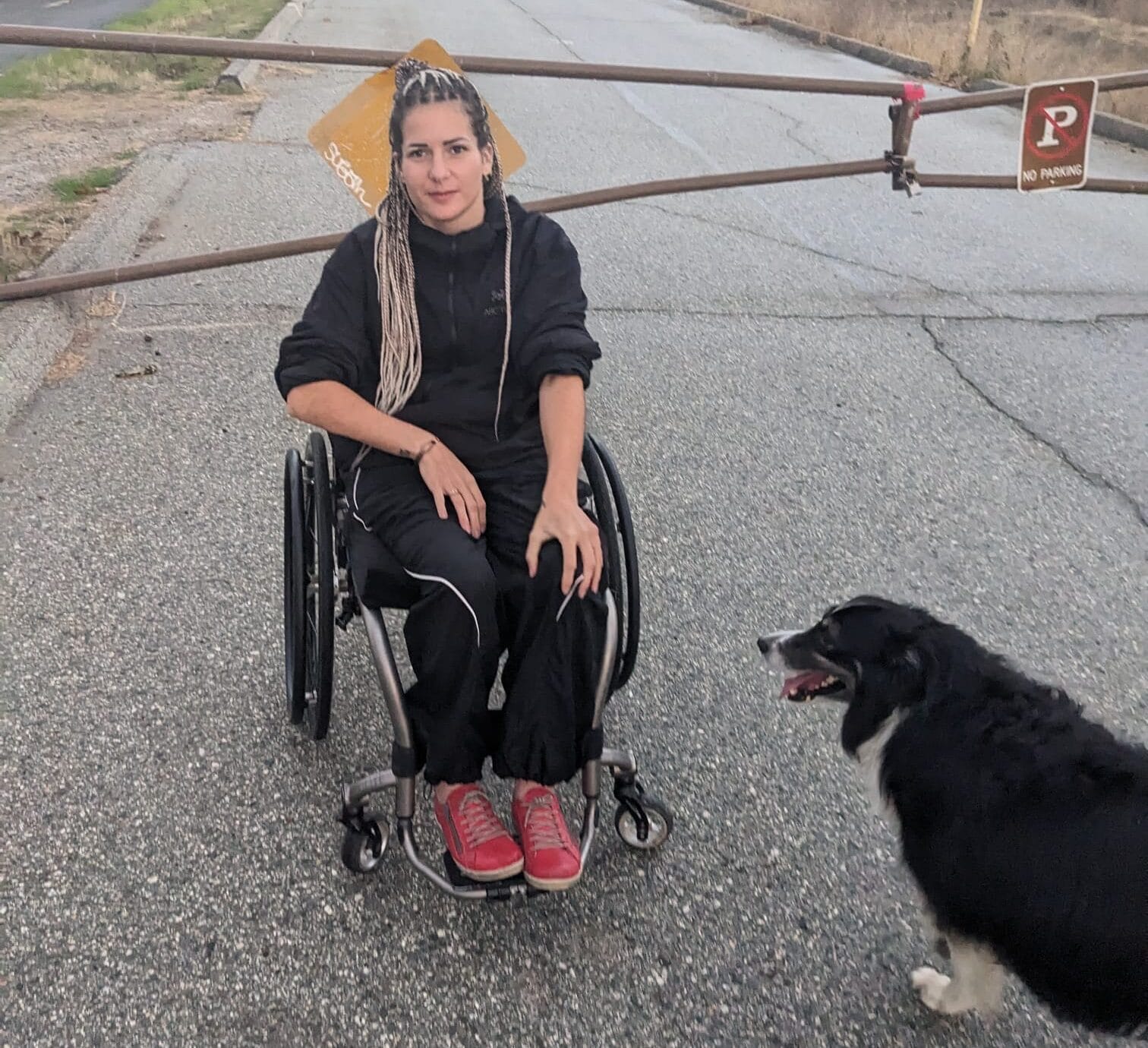If you’re thinking about adding a power assist device to your manual wheelchair, new findings recently published by BC researchers provide good insight into the choices available to you, along with their pros and cons.
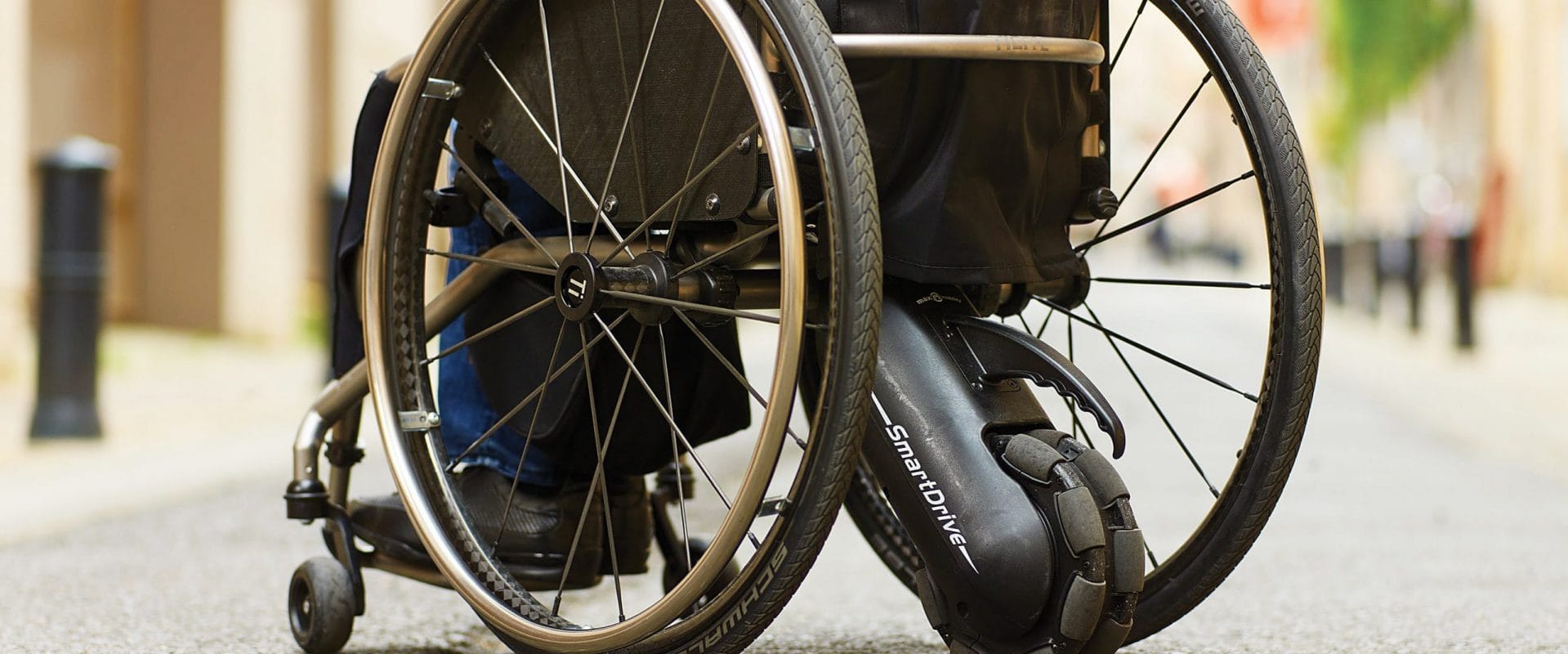
In the past two decades, an exciting new mobility product has emerged—the power assist device (PAD). PADs have built-in electric motors and rechargeable batteries. They’re intended to be easily attached to and detached from a manual wheelchair, and to provide some of the benefits of a power wheelchair while still allowing the user to enjoy the lightweight, maneuverability, portability, and exercise potential of their manual ride.
PADs have become an attractive mobility option for several reasons. First and foremost are shoulder and wrist overuse injuries that are a big problem for manual wheelchair users—particularly for those who have a lifetime of manual wheeling and transferring. Also, those seeking to expand their range, get out in their communities more, and simply avoid being exhausted when they arrive at their destination have turned to PADs. And some types of PADs even make it that much more possible to get off the beaten (or paved) path
Recently, a group of UBC, ICORD and BCIT researchers working in the fields of biomedical engineering and occupational therapy decided to take a deep dive into the world of PADs. The researchers—Mahsa Khalili, Angela Eugenio, Allison Wood, Dr. Machiel Van der Loos, Dr. Ben Mortenson and Dr. Jaimie Borisoff—wanted to better understand the devices’ mobility benefits for users, compare perceptions about the three different types of PADs, and identify the features and design characteristics of PADs that users most appreciate.
Two Themes from PADs Research
The first of the two themes that emerged from the study was positive—for the most part, participants believed that PADs are (or could be) a benefit in their lives in three specific ways:
The first was that they boost autonomy, independence and sense of belonging, primarily by making the task of getting to a destination less of a challenge.
Second, PADs allow users to access and explore new environments—they can be relied on to travel longer distances and traverse more difficult terrain (for example, side slopes, inclines, and softer and rougher surfaces).
Third, they agreed that PADs are ideal for maintaining physical health—by conserving energy, and preventing and managing overuse injuries.
The second major theme wasn’t as positive. Participants expressed frustration with their perceived shortcomings of PADs. Some of the drawbacks they identified included difficulty controlling the devices, less than ideal safety, too much weight and size, and financial barriers associated with purchasing one. Specific concerns included unexpected acceleration, unpredictability on uneven surfaces, unreliable battery life, difficulty attaching or detaching the devices, and high cost coupled with lack of funding assistance within existing government programs for mobility devices.
However, none of these perceived drawbacks outweighed the perceived benefits, and participants all expressed hope that any outstanding issues could be ironed out in the PADs of the future.
Three Types of Power Assist Devices
Rear-Mounted PAD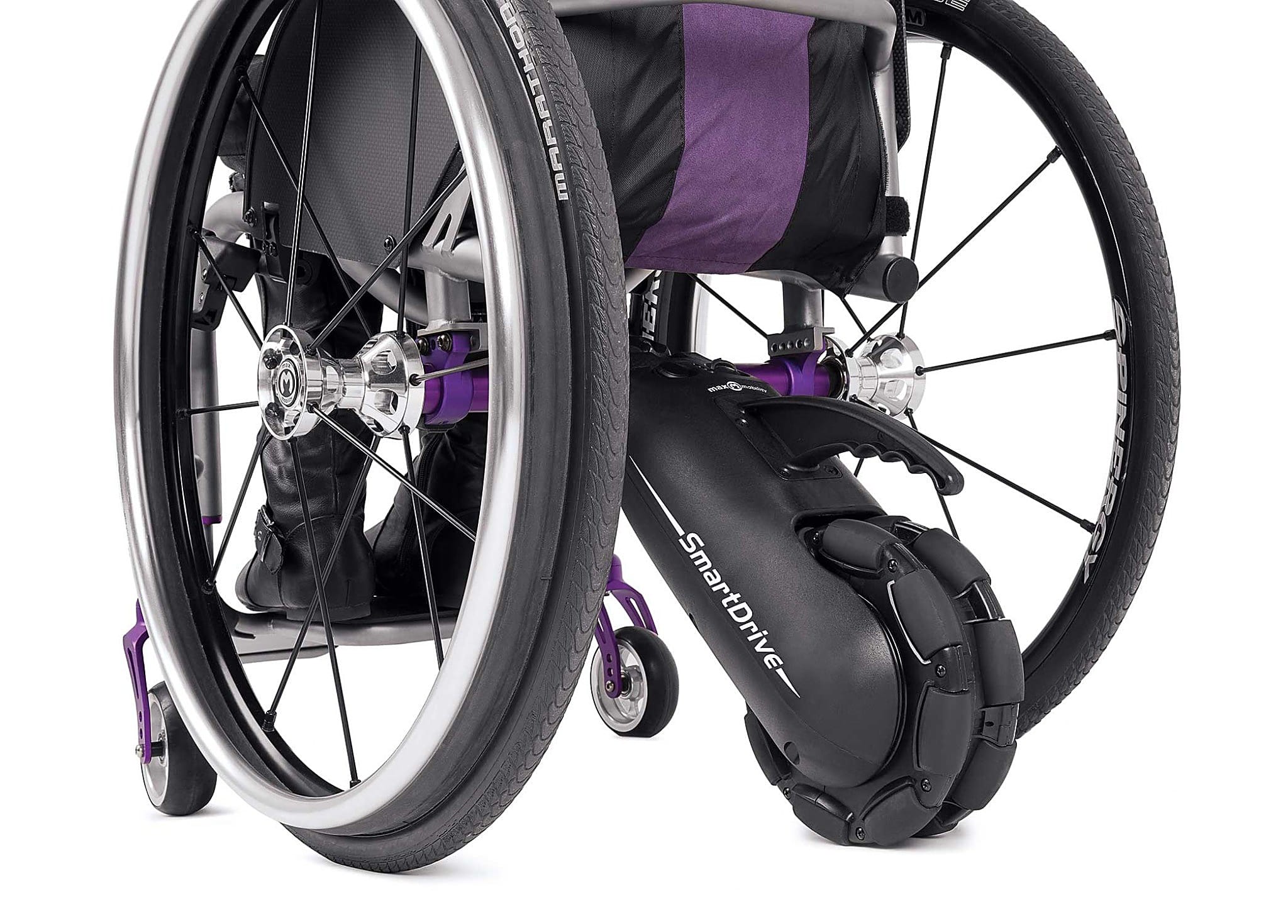 A rear-mounted PAD is a motorized wheel that is mounted to the wheelchair’s rear axle. These devices are typically controlled with a frame-mounted joystick or, like The SmartDrive (shown), wirelessly via a wristband. These devices are the easiest to lift and transport.
A rear-mounted PAD is a motorized wheel that is mounted to the wheelchair’s rear axle. These devices are typically controlled with a frame-mounted joystick or, like The SmartDrive (shown), wirelessly via a wristband. These devices are the easiest to lift and transport.
Front-Mounted PAD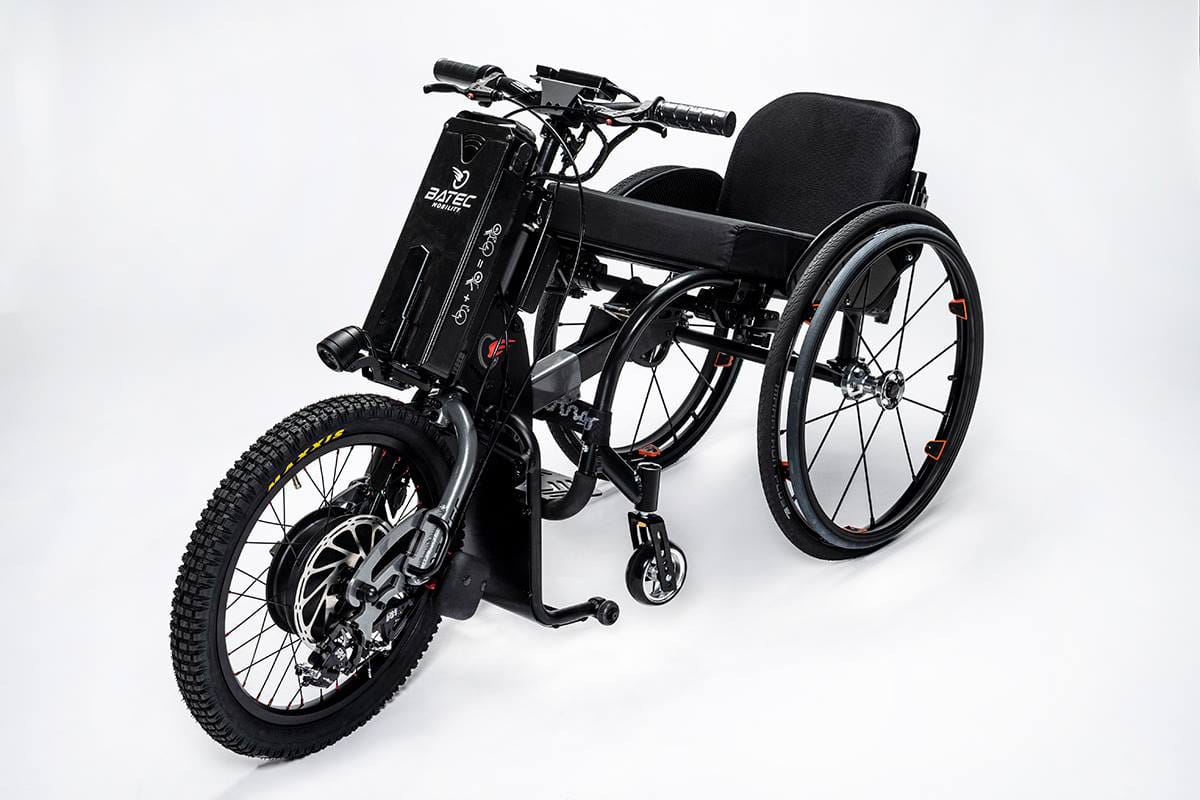
A front-mounted PAD is attached to the front of a manual wheelchair frame. It lifts the front casters off the ground, resulting in a mobility device that looks a lot like a three-wheeled scooter. There are versions of this type of PAD that incorporate a manual hand bike with a power assist motor. Examples of these types of add-ons include devices from the Batec (shown) and Rio Mobility.
Powered Wheels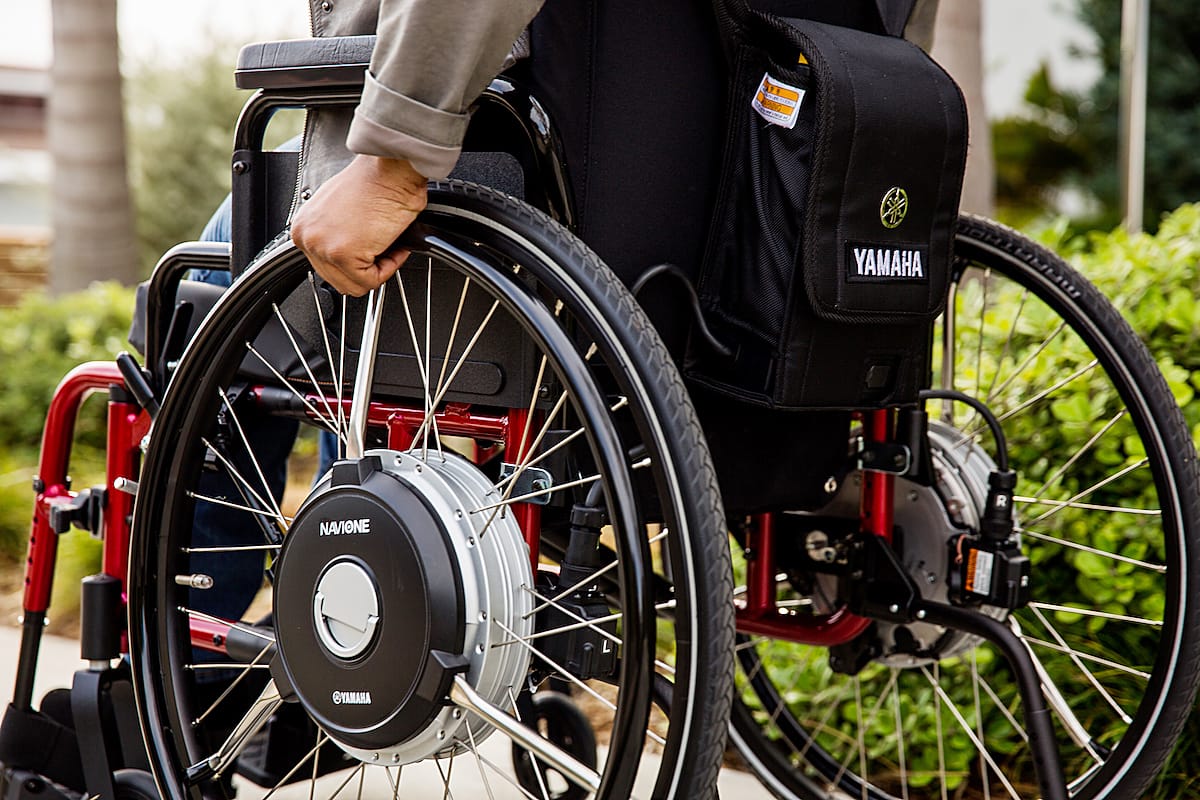
Powered wheels are the final type of PAD and replace the conventional wheels of a manual wheelchair. These devices can be controlled either by a joystick, or by direct pushrim interactions—built-in force sensors detect the user’s input force to the pushrims (this specific type of powered wheel is known as pushrim activated power-assisted wheels, or PAPAWs). PAPAWs’ in-hub motors provide propulsion assistance—push harder, and it pushes harder.
Participants went on to describe what they perceived to be the strengths and limitations of the three different types of PADs:
- front-mounted attachments
- rear-mounted attachments
- powered wheels
Front-mounted PADs were viewed as being the most ideal for anyone interested in extending their range and capability to negotiate difficult terrain in the outdoors. But participants also pointed out that, because of their size and how far they extend from the front of the wheelchair, these types of PADs were less than ideal for indoor use, accessing narrow spaces, and transitioning from outdoor to indoor spaces.
Conversely, participants perceived that rear-mounted PADs were a much better choice for confined spaces and indoor use, given their lighter weight, smaller footprint, and tighter turning radius.
Those advantages indoors, however, were seen as being at the expense of outdoor performance— participants reported these types of PADs were only appropriate for smooth, flat surfaces. They also perceived rear-mounted PADs as being generally more difficult to control and somewhat less safe than the alternatives.
Finally, the powered wheels were perceived by participants as being the best all-around practical solution. They noted that these types of PADs looked and operated much like manual wheelchairs, with virtually no addition to the footprint of their chair. While participants said they aren’t as useful as front-mounted PADs in more difficult terrain outside, they felt powered wheels were safer and more reliable outdoors than the rear-mounted devices.
The researchers suggest that people interested in obtaining a PAD to carefully weigh their needs and intended uses of the device in order to make a decision about which type best suits them.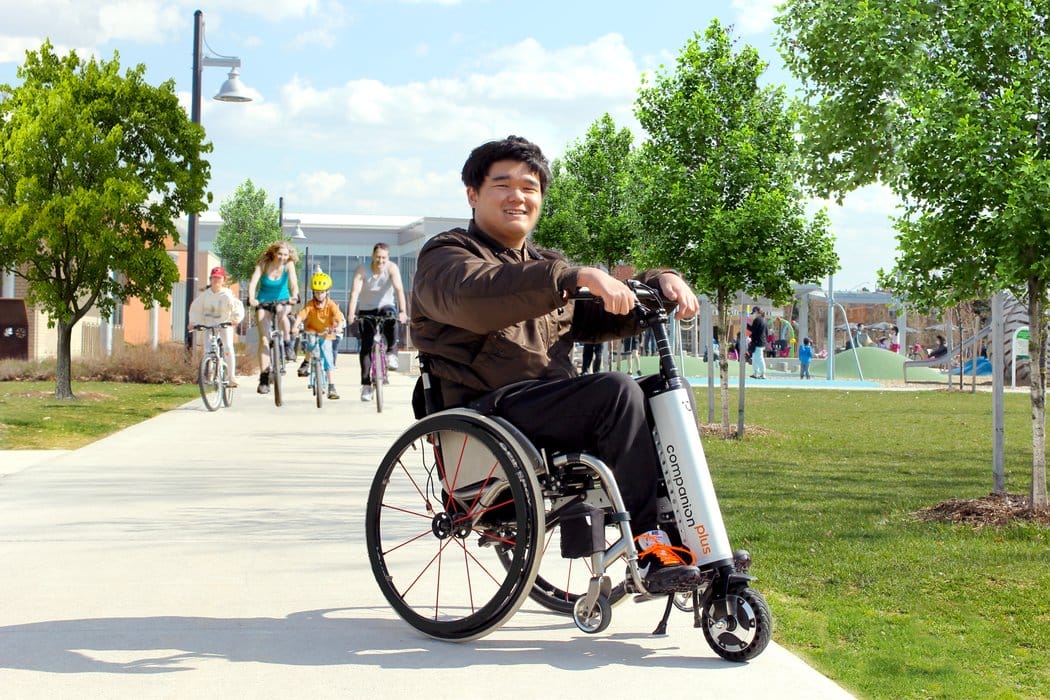
PADs of the Future
The most common suggestions for future versions of PADs revolved around improving the battery life to limit the possibility of being stranded, as well as addressing issues about safety and poor control.
Another area of concern was universal compatibility with all types of manual wheelchairs. Users spoke of frustrations with needing special brackets, and even the need to change their wheelchair frame entirely in order to be compatible with the PAD. Size and weight was also identified as an area needing improvement, with participants saying that future designs should be smaller and lighter in order to improve portability and the ability to attach and remove independently.
Finally, participants spoke of the desire to see prices come down on PADs—and the need for government funding programs to consider PADs as essential equipment and widely eligible for funding.
Next Steps for Power Assist Devices
“Power assist devices for manual wheelchairs are perhaps the most exciting area of growing innovation in our (mobility) industry,” says Borisoff, ICORD principle investigator, and Director of BCIT’s Rehabilitation Engineering Design Lab. “… Rear-attachments and front-attachments are relatively new, with several new products entering the market very recently.”
“Right now it can be confusing to end users and therapists about which device is most suited for a particular person, or environment, activity, etc. Couple that with limited resources of clients and their funding sources, and it becomes clear that there is some pressure in making purchase decisions. And there is relatively little information to guide this process. More research is needed.”
He explains that this study’s first author, UBC biomedical engineering PhD candidate Mahsa Khalili, is currently completing a large survey that’s similar to this one. He also says that the collaboration is in the process of creating a framework for evaluating different PADs and comparing them in indoor and outdoor situations. He also says his own lab will continue to research and develop new PAD technology. This includes looking at developing PADs for difficult terrains, improving safety, and exploring add-on options that expand where a manual wheelchair can go.
 This article originally appeared in the Summer 2021 issue of The Spin. Read more stories from this issue, including:
This article originally appeared in the Summer 2021 issue of The Spin. Read more stories from this issue, including:
- Neuromodulation
- Alternative Exercise Options
- Access BC: Freedom to Roam
And more!


